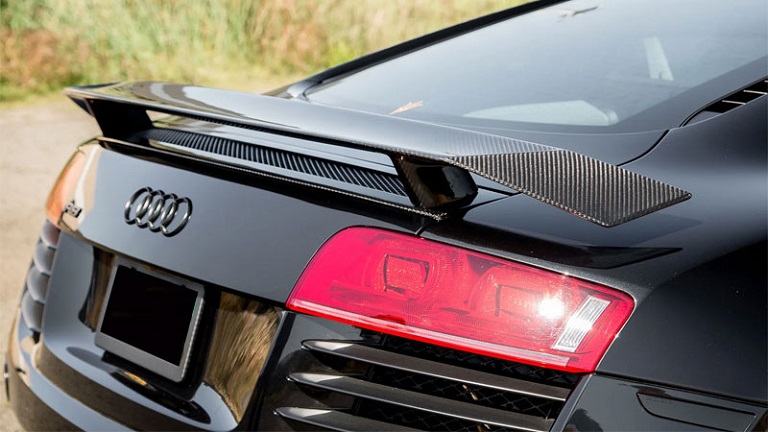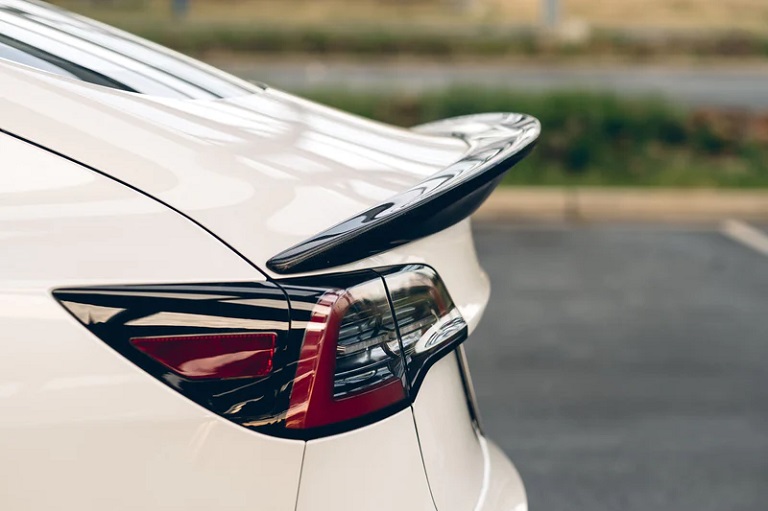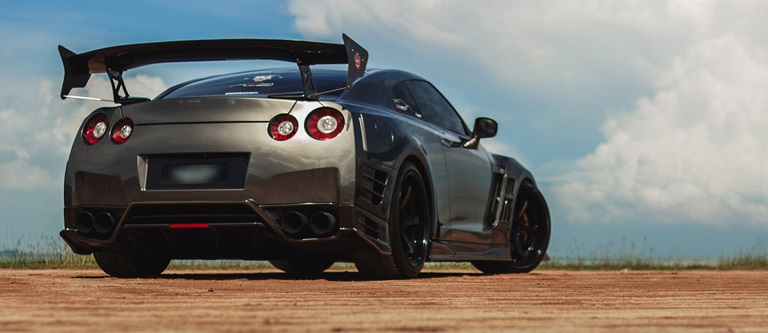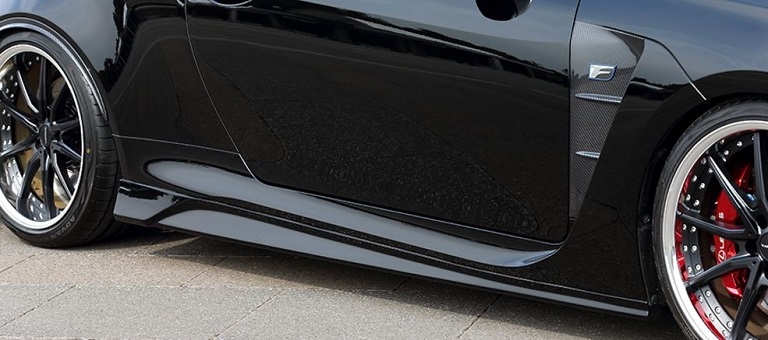Contents
I remember the first time I watched Fast and Furious. I immediately thought: “I can’t wait until I grow up, have my own car and outfit it with all types of cool spoilers and lights”. But spoilers do much more for cars than add coolness to it – they have functional benefits, especially if you’re a gearhead who takes it to the tracks every now and then. Here’s everything you need to know about spoilers.
What’s a Spoiler?
Spoiler – a word derived from Dutch and meaning “to spoil”, has become a part of the automobile industry since the 1930s. It’s used to describe an aerodynamic device located on the rear end of a car, usually on the roof, designed to reduce drag.
The first spoilers were found in race cars to help increase speed by reducing air resistance while riding at high speeds – they created downforce by pushing the car’s body downward, increasing traction via increased contact with the road surface and creating more stable aerodynamics by separating the exhaust from the rear wing. After World War II, spoilers became a part of street cars as well.
Fast and Furious has been responsible for introducing many gearheads to car mods – spoiler or not.

What Are Spoilers Used For?
There are two main types of spoilers on modern cars – functional and non-functional. The first one is meant to improve aerodynamics and reduce drag at high speeds – it’s usually found on the rear end of a car and consists of small wings or fins that are angled backwards to create downforce. The second type is purely aesthetic – the spoiler adds some flavour, style and attitude to your vehicle.

Factory vs Aftermarket Spoilers
There are two main methods for installing a spoiler: pre-installed (or factory-installed) and aftermarket. Pre-installed spoilers are made by automobile manufacturers themselves, so they fit perfectly onto the body of your car without any modifications needed.
Aftermarket spoilers, on the other hand, are usually purchased separately and require some adjustments to ensure that they fit as intended – for example, you might need to cut away a piece of your car’s body or make some adjustments in the wiring system.

Types of Spoilers Based on Location
Nowadays, you’ll find rear spoilers, front under-bumper spoilers, as well as side skirts and wings. The first type is designed to reduce drag, while the latter ones are meant to improve downforce – however, both can be used for style purposes as well.
Front under-bumper spoilers are usually found on high-performance cars with big engines – they’re installed in order to reduce air pressure underneath the vehicle’s front end, which improves aerodynamics. Side skirts or fender flares are installed on certain models of vehicles to add more style to them, but they also serve as a functional part – they’re meant to smooth out the airflow around your wheels, helping reduce drag and improving aerodynamics.
Rear spoilers are commonly installed on sports cars or high-performance vehicles – their main purpose is to improve downforce and stability at higher speeds, which makes them perfect for track day enthusiasts. However, rear spoilers can also be used to add style to your vehicle – it’s up to you whether you want that extra boost in speed or more attitude with your car.

How To Install A Spoiler?
Installing a spoiler is not as easy as it seems – whether you’re going for a pre-installed or aftermarket option, there are a few things to consider before fitting it onto your vehicle. For starters, make sure that the spoiler you want to install has all the necessary brackets and mounting points included in the package – if so, then go ahead and attach them one by one according to the manufacturer’s instructions. If not, then you’ll have to do some modifications to your car’s body in order to properly fit the spoiler.
Aftermarket spoilers are usually easier to install than factory ones, as they don’t require any modifications and can be easily bolted onto the vehicle’s body with just a few tools. Make sure that you have installed all necessary brackets before doing anything else – if not, then it’s best to measure them first and make adjustments accordingly.
After that, use a jack stand or other similar tool to lift up one side of your car and bolt the spoiler in place. Make sure that it’s positioned correctly, otherwise, your car might look funny when driving around with a misaligned spoiler on its rear end. After installing one side of your new addition, do the same thing for the other and check whether both spoilers are even – if not, then make adjustments as necessary.
Front under-bumper spoilers are usually pre-installed by automobile manufacturers themselves and don’t require any modifications – they’re easy to fit onto your vehicle and don’t require any special tools. Note that they’re usually installed on high-performance vehicles, which means that they might not be as durable as aftermarket spoilers – try not to take them off the road too often or at least put some kind of protective layer underneath them if you do so.
Side skirts or fender flares are also easy to install – for starters, make sure that they fit perfectly onto your car’s body. Use a jack stand again and bolt them in place by hand – if not, then you’ll need a wrench to tighten them properly. After that, check whether everything’s in place and make adjustments if necessary – side skirts are usually installed on the rear of your car but can be installed on either side depending on personal preference.
Rear spoilers are probably the most difficult thing to install on your vehicle, you might have to do some modifications to ensure proper fitment of your new addition – otherwise it would look quite awkward. It’s a good idea to check whether there are any brackets that need to be cut off or modified in order for your spoiler to fit – if so, then go ahead and do it.
After installing the spoiler itself and making sure that everything is properly positioned, use a jack stand again and bolt the rear of your car onto it by hand. Check whether everything’s in place and make adjustments if necessary – after that, you should probably tighten all bolts with a wrench.

